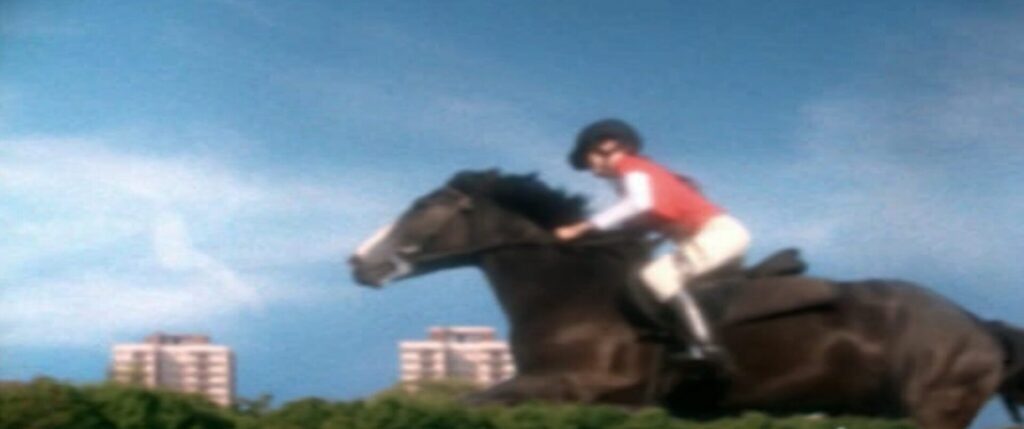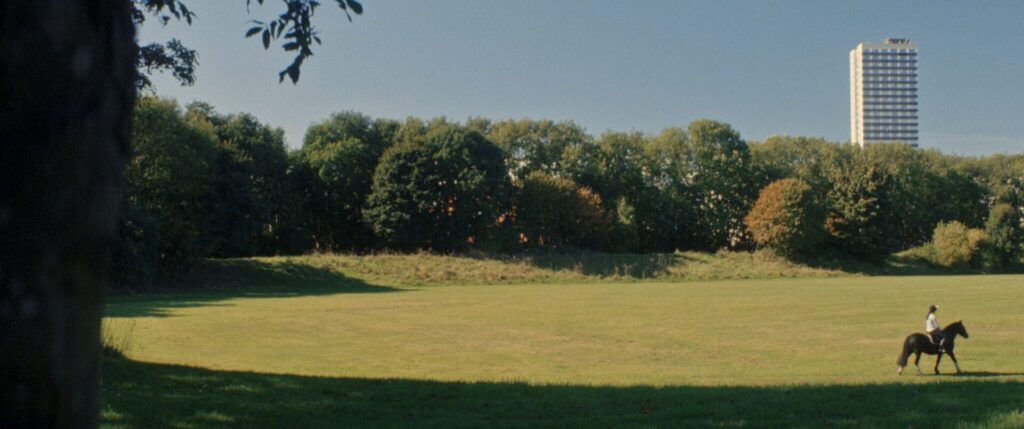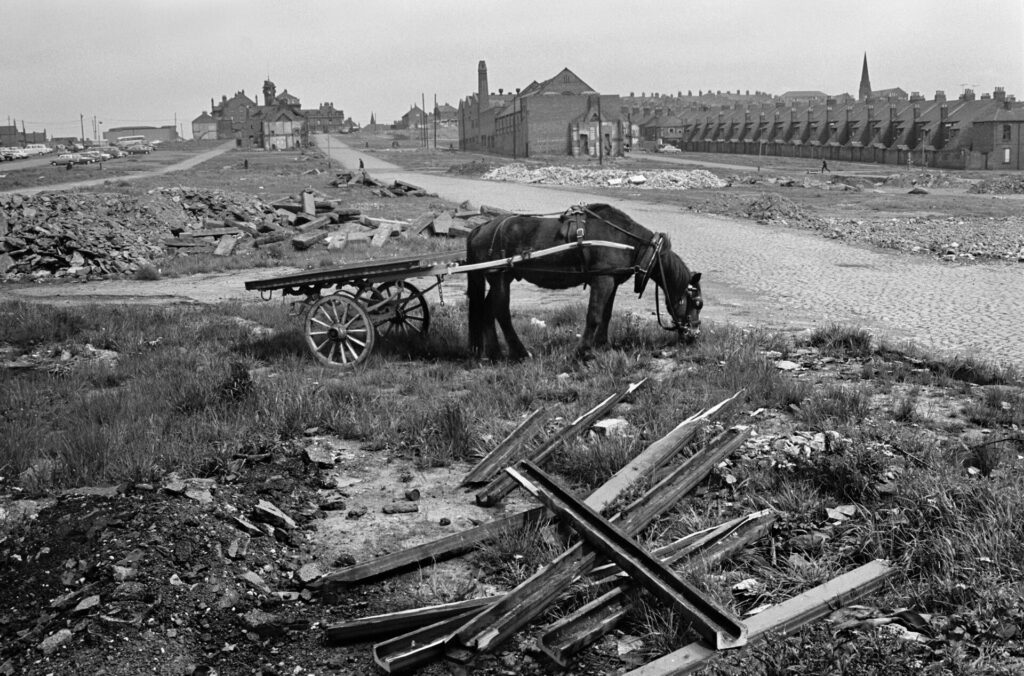Somewhere in a glitch in time Northumbria is the 51st state of the USA. Descendants of the Nixons, Johnsons and Armstrongs who left the Cheviots to spark the anarchy of Appalachia, the bloodbath of the Wild West and the moon-shadowed schemes of the 1960s have returned to their homeland to make it great (again). Buildings are designed by Gosforth lad Terry Farrell in homage to the Prairie architecture of Frank Lloyd Wright. Washington (C.D.) wideboy Bryan Ferry has written the official state song, a sort of Elvis-Sinatra-Warhol mash-up inspired by his lifelong obsession with the neon glare of American consumerism. The Animals run a New Orleans-style speakeasy by the Billy Mill interchange called – predictably enough – the House of the Rising Sun. Overseeing it all, a caricatured image of Jimmy Carter saying “howay the lads” in a cowboy drawl at Newcastle Civic Centre in 1977 provides both logo and motto for the state flag, his sunbelt face gleaming out like a star against the red-gold stripes of Saint Oswald.
But after all we do not need to go so gonzo. Away from such flights of fancy, as Harry Lawson’s new film Stepney Western underlines in more measured, more nuanced ways, the link between North East England and the US is a profound one and no mere play on words.

Partly, this has to do with fundamental questions of space. In one sense Ouseburn, the Byker edgeland at the heart of the film, is an archetype of inner-city claustrophobia and class division. And yet it is clear from one of Stepney Western’s opening sequences – archival footage of post-war Geordie kids enjoying a Wild West “waggon train” fantasy – that what unites urban Newcastle and the US frontier is the long-running supremacy of vigorous, canyon-spanning movement (and beyond that, perhaps, a more deep-seated Redesdale-via-Knoxville yearning for “freedom” – whatever that may be).
It is the ghost of the steam train that most powerfully embodies this fact in the film’s ambient backdrop. Through fleeting glimpses of the Ouseburn Valley’s vaulting railway bridges – and more recurrently through the motif of the Tyne and Wear Metro that threads through the narrative – we are reminded that both industrial Newcastle and the American West were essentially steampunk landscapes brought into being with the aid of the locomotive (and the sudden, accelerated form of physical freedom it seemed to promise to human beings).

But of course Stepney Western is mainly interested in a more small-scale, more organic expression of this theme of liberation through physical movement: a modern Geordie version of the riding culture that dominated the Old West along with the steam train. Aside from anything else, the film’s focus on Stepney Bank Stables, an equestrian centre for local children and young people founded in 1992, is a slaying reminder of how places like Newcastle have diverged from their American cousins since the heroic age of the railways and industrial expansion. While the states of the old US frontier have mostly been rescued by oil fields and economic imperialism (race divides, class divides and opioid crises notwithstanding), the North East has been much less fortunate. Archival shots of the region’s now long-gone coal industry – and of its much-exploited workhorses – are subtle nods at the deindustrialisation of the twentieth century. Eventually, of course, this tortuous process would give way to a “regenerated”, hipster Ouseburn, as well as to social deprivation in the surrounding areas only partially mitigated by charities like Stepney Bank Stables.
Still, in the newly pastoral setting of the post-industrial Ouseburn, where farm animals and blue-haired gig-goers walk in the shadow of converted warehouses and ruined flax-mill chimneys, somehow the old dream of freedom through motion has survived (or been revived) in the shape of the horse and its youthful riders. It is surely no exoticism to say that a kind of borderland wildness defines these young subjects as they are portrayed in Stepney Western. Certainly, this is strikingly the case for central figure Ella, who brings to mind the indomitable protagonists of films by Clio Barnard and Andrea Arnold (and, more locally, photos by Tish Murtha and Sirkka-Liisa Konttinen) – and yet arguably surpasses them all through sheer fierceness and realness.

In the end, it is the fate of Ella and her stablemates that brings home what is really at stake in the narrative of Stepney Western – and for the modern North East more generally. No gang of real-world Billy Elliots, the young riders seem ultimately to have been offered at least the chance of escape from urban Newcastle through their training at Stepney Bank, and the onward route of the college at Kirkley Hall in the Northumbrian countryside. But who ultimately can say what sort of a life awaits them – awaits us all – in an uncertain, ominous twenty-first century, where a secure existence is increasingly hard to come by even in the most favourable contexts, and where countless more sinister stormclouds loom on the horizon?
The identities of both the North East and the American West have always been based on a sense that they are places on the edge. It is this mindset of precariousness, of being on the brink and on the border of the comfortable world, and of being both thrilled by the ride and terrified of falling off, that is so evocatively captured in the powerful realist reverie that is Stepney Western. Though it may be northern English in its basic filmic forms and influences, its underlying spirit is something like a hybrid of the Northumbrian and US frontier impulses towards a kind of untamed, possibly forlorn escapism. More to the point, in the final instance its focus is simply and movingly on human beings trying to survive – and just maybe thrive – in an environment that is both fleetingly beautiful and brutally unforgiving. A true western and a slantwise classic of the genre, you might say.
Stepney Western is at Newcastle Contemporary Art until Saturday 26 April



